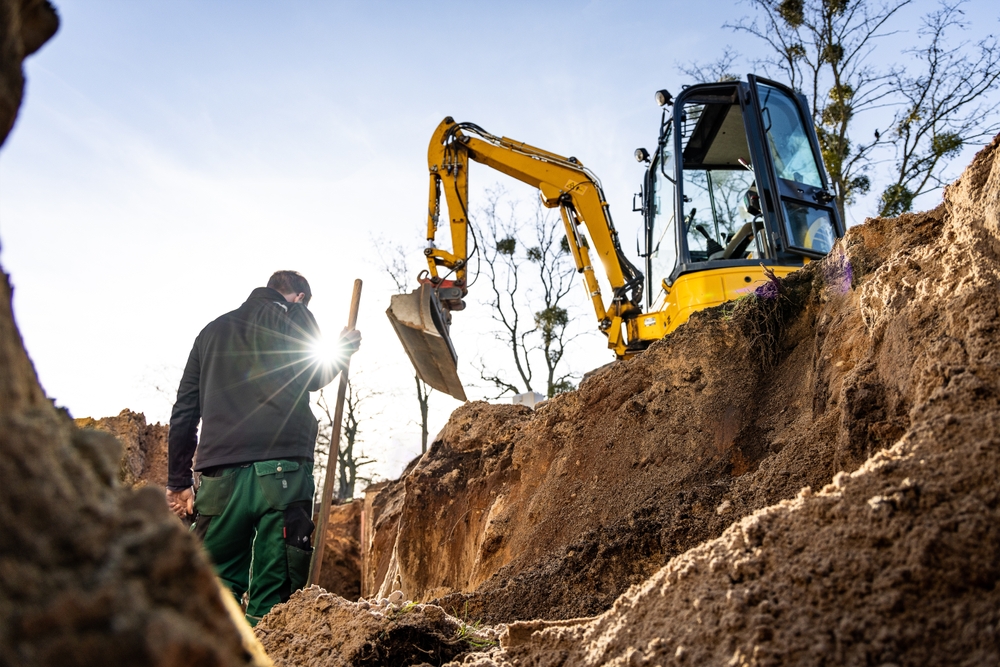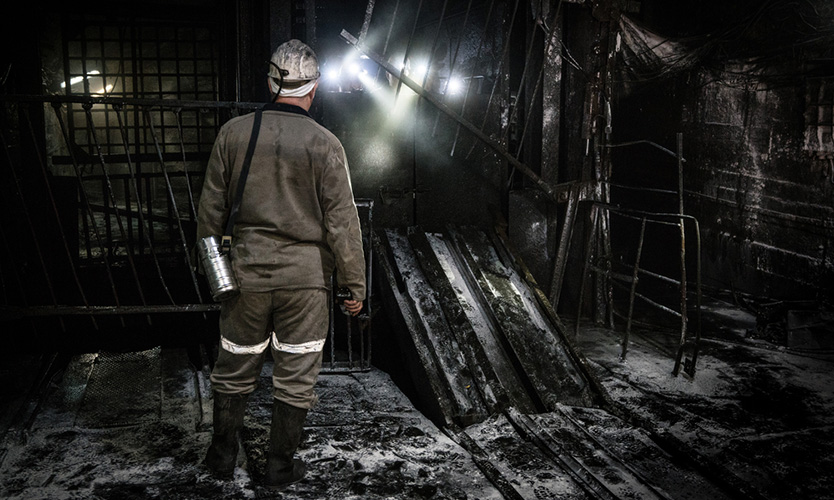Broker promotions are much in the news this week.
Source link
Tag: Workers Comp
Injured day laborer improperly denied comp benefits: Appeals court
A worker seriously injured from a ladder fall during demolition work at a building in Washington, D.C., in June 2020 was improperly denied workers compensation benefits, the District of Columbia Court of Appeals ruled Thursday.
Jose Sanchez Lopez was out of work for 10 months following the workplace incident, which occurred while he was working for Cris & G Painting LLC, a subcontractor for general contractor Foundry Construction LLC.
Mr. Sanchez Lopez sought temporary total disability benefits and medical expenses for his injuries, but an administrative law judge denied the claim for disability benefits because of questions over employment relationship.
The judge determined Mr. Sanchez Lopez failed, under a “relative nature of the work” test, to prove that he was an employee of Cris & G Painting.
The appeals court, in reversing and remanding, said the judge engaged in a “formulaic recitation and overly literal application” of the relative nature of work test, and that employee status was still unclear.
The court said while Mr. Sanchez Lopez admitted he was a day laborer, the fact that he was provided with “instructions, tools, and schedule, compelled a finding that Mr. Sanchez Lopez did not have a ‘separate calling or business’ and weighed in favor of concluding that he should not have been expected to carry his own accident burden.”
The court also said a compensation review board wrongly upheld the administrative law judge’s findings.
WCRI study analyzes factors behind high-cost comp claims
High workers compensation claims costs – or claims in the top 5% of medical payments within 36 months of injury – represented 28% of total injured employee medical payments between 2015 and 2019, according to a study released Thursday by the Workers Compensation Research Institute.
“Our findings highlight the importance of monitoring claims with late occurring resource-intensive care to keep treatment on track as planned and prevent unnecessary delays in recovery,” WCRI President and CEO Ramona Tanabe said in a statement.
Researchers analyzed more than 720,000 open and closed claims with more than seven days of lost time from 32 states.
The study found the average medical payment per high-cost claim was more than $100,000, more than seven times as high as that for other claims that had more than seven days of lost time.
The study further showed that high-cost claims had longer periods of disability than non-high-cost claims, and that total costs of high-cost claims averaged more than $200,000 per claim.
Researchers said injury complexity is one of the most significant factors connected to a claim having higher costs, and that resource-intensive care is often associated with a greater likelihood that a claim will become high-cost.
“Early identification of complex claims with comorbidities and degenerative conditions can also help better address workers’ needs, and a higher level of care coordination likely helps to reduce the probability of a claim becoming a high-cost claim,” Ms. Tanabe said.
Video: Comp Spotlight with Benjamin Stockman of Venable
Traditional setting key to engaging construction workers in safety training
DENVER — The less expensive online training modules that have gained popularity in recent years for lower costs and convenience are not effective in high-risk construction, where workers prefer hands-on learning to falling asleep in front of a laptop.
Cue a cartoon of a worker asleep at a desk, according to Graham Clark, Mint Hill, North Carolina-based health & safety manager with FHG Inc., a general contractor in the energy industry working in 40 states.
Mr. Clark led a session Wednesday at Safety ’24, the American Society of Safety Professional’s annual conference, on how to engage construction workers in training that is often mundane, usually required, per the Occupational Safety and Health Administration that mandates that workers be trained in such protocols as fall protection, trenching hazards and protective equipment, and can mean the difference between life and death.
“Online it is easy to check out,” he said. “It’s not human. It’s stilted. It is not interactive.”
Mr. Clark said training in an engaging small-group setting, soliciting feedback from the audience is ideal. The more hands-on the better. Invite workers to tell their stories, he said.
“You all know construction guys; they want to work, and it is working with their hands. They value action,” he said. “What’s the downside of in-person training? … It’s expensive and it’s really time-consuming (because) you’re pulling guys off the job.”
Some of Mr. Clark’s best, simple practices included serving food and creating seating arrangements that welcome engagement.
“I think that construction guys and gals probably in school were not the people up front, raising their hand,” he said. “And they are super smart… it’s our job as trainers to come draw it out of them. We want our guys to learn and we want to learn from them. Learning needs to go both ways.”
Federal judge declines to rule on N.J. police cannabis discipline
A federal judge in New Jersey has declined to rule on a case involving off-duty police officers who consume state-legal cannabis, despite there being a federal prohibition on gun ownership and marijuana use.
Judge Xavier Neals, sitting in the District of New Jersey, said he would “abstain from exercising jurisdiction,” and instead stay the proceedings initiated by officials from Jersey City, who challenged a state law that bars discipline against employees who lawfully use cannabis outside the workplace.
Under federal law, cannabis users may not possess firearms, and Jersey City argued that the prohibition would bar police officers from having firearms on the job.
In April 2022, Jersey City issued a memo to police officers saying marijuana use would be off-limits, even to off-duty officers. The state attorney general, that same month, issued a memo stating that police officers are covered under the provision that bars adverse employment actions against employees who use cannabis off the clock.
In his Friday ruling, Judge Neals said he was not dismissing the case, but must stay the proceedings because of parallel cases currently playing out in the courts that could affect the Jersey City case.
Some of those other cases involve either lawsuits or administrative proceedings initiated by officers who were fired for cannabis use.
The judge said the plaintiffs can reopen the present matter within 60 days of the conclusion of the other state proceedings.
Washington state agency cited over worker’s drowning
The Washington State Department of Labor & Industries said Tuesday that it cited the state’s Fish and Wildlife Department after an employee drowned at a fish trap in January.
The employee was working on the Duckabush River in Brinnon when the drowning occurred.
Fish and Wildlife was cited for nine workplace safety violations and issued $114,000 in penalties. The agency had been cited in March in connection with the drowning of a fisheries biologist last year.
Workplace safety penalties in Washington go into the state’s workers compensation supplemental pension fund, which helps family members of those who die on the job.
Legislation slow in preventing violence in health care
Efforts to protect medical professionals from violence in health care settings appear to be lagging despite multiple federal and state efforts.
The federal H.R. 2584, which would establish the Safety From Violence for Healthcare Employees (SAVE) Act, was introduced in April 2023 and now has 116 cosponsors, spurring companion legislation in the Senate. The legislation would create criminal penalties for assaulting or intimidating hospital staff, modeled after laws related to assaulting an airline worker.
Proponents have been calling for swift action, but the legislation has stalled, in part, because of language differences between the House and Senate versions of the bill. The American Nurses Association, for example, supports the Senate version because it focuses more on preventive measures than penalties for crimes that have already occurred.
State efforts are all over the board, with some states putting in place safety standards for health care workers and others proposing legislation. More than two dozen states have worked on the issue with mixed results.
Health care violence surged during the pandemic, but the problem existed long before, experts say.
“We’re seeing an increase in workforce violence in the health care setting pretty much year over year from 2014 to 2024,” said Bill Bower, Chicago-based executive vice president and healthcare vertical leader for Gallagher Bassett Services Inc.
Before joining Gallagher in 2021, Mr. Bower was chief risk officer at Northwestern Memorial Hospital in Chicago, and he said that organization experienced increased incidents of workplace violence consistent with what has been seen industrywide.
Jane Muir, a postdoctoral fellow at the University of Pennsylvania, said she recently studied clinicians working in emergency departments to learn more about employee experience with workplace violence.
“Many of the clinicians in the study told me, ‘We’re just not culturally the same as we used to be in emergency departments,’” Ms. Muir said of post-pandemic medical settings.
While doctors have also been victimized – a January poll by the American College of Emergency Physicians found that 91% of emergency room doctors say they or a colleague were threatened or attacked within the prior year – nurses find themselves more frequently subjected to violent acts.
“Nurses are on the front lines of all those assaults because they’re the ones who are triaging patients, they’re the ones who are delivering the majority of direct patient care,” Ms. Muir said.
The American College of Emergency Physicians says documented incidents of violence against health care staff have run the gamut from verbal death threats to physical assaults.
The American Nurses Association says that while it has not seen any significant increase in health care worker violence from 2023, the issue continues to be a problem for nurses, nursing assistants, aides and vocational nurses.
“The sheer volume of nurses that provide hands-on or direct care puts them at risk because they work closest to patients and their families,” said Ruth Francis, the ANA’s senior policy advisor.
Workplace violence can sometimes lead to the filing of workers compensation claims, more often related to physical injuries than mental injuries, Mr. Bower said.
In July, the Journal of the American Medical Association published a study showing a slight drop in the number of Michigan nurses planning to leave the profession in 2023 compared with the year prior.
The study said improved working conditions and a slight reduction in cases of abuse and assaults at work could be a factor in the decline.
While the development is viewed as positive, experts say insurers and risk managers are not in the clear because current levels of violence continue to be at rates higher than they were pre-pandemic.
In addition to legislative action, regulators are tackling the issue, with a U.S. Department of Labor spokesman saying the agency is scheduled to issue a notice of proposed rulemaking on health care workplace violence in December.
Absent a specific safety standard, employers “still have a legal obligation to protect workers who have experienced acts of workplace violence or are aware of threats, intimidation or other indicators of potential for violence at work,” a DOL spokesman said.
Oklahoma contractor cited over fatal trench collapse
The U.S. Occupational Safety and Health Administration said Tuesday it cited an Oklahoma construction contractor after a worker was killed this year in a trench collapse.
OSHA cited Edmond-based Jerlow Construction Co. over the February death of a pipe layer who was working in an excavation site near Shawnee. The worker was killed during the collapse of a nine-foot-deep trench.
Jerlow permitted employees to work in the excavation without proper protections, including shielding, benching and sloping, OSHA said.
Jerlow was cited for one “repeat” violation and three “serious” violations following the incident, which occurred as workers were installing an eight-inch water line.
OSHA proposed $85,173 in penalties.
The agency said Jerlow also failed to train employees on how to recognize excavation hazards and failed to perform daily inspections to verify safe entry conditions.
Jerlow has 15 business days to contest the citation and proposed penalties.
6th Circuit denies coal insurer appeal in Black Lung Benefits claim
The 6th U.S. Circuit Court of Appeals on Monday denied a petition by a coal company and its insurer challenging a former worker’s award for compensation under the Black Lung Benefits Act for injuries the man suffered from working in coal mines for nearly two decades.
The federal appellate court denied an appeal by Arch Coal Inc. and Apogee Coal Co. LLC, which contested liability for a claim filed by David Howard, who worked as a coal miner from 1978 to 1997. His most recent employer was Apogee Coal.
The defendants didn’t contest Mr. Howard’s entitlement to benefits for legal pneumoconiosis but disputed being identified as the liable insurer on Mr. Howard’s claim.
The Black Lung Benefits Act provides benefits to miners who suffer lung diseases caused by prolonged exposure to coal dust.
At the time of Mr. Howard’s retirement in 1997, Apogee was self-insured through its owner, Arch Resources, formerly known as Arch Coal.
In 2019, Arch moved to transfer liability for the claim to the Black Lung Disability Trust Fund, a motion denied by an administrative law judge.
In subsequent litigation, Arch raised due process arguments, contending that it was not given proper notice that it was named as Apogee’s insurer, and that another insurer had originally been named as the sole responsible party.
The 6th Circuit disagreed, ruling that Arch provided “no extraordinary circumstances justifying its motion to expand the record,” and failed to make “any meritorious argument” on the merits of a Black Lung review board’s decision on liability.









